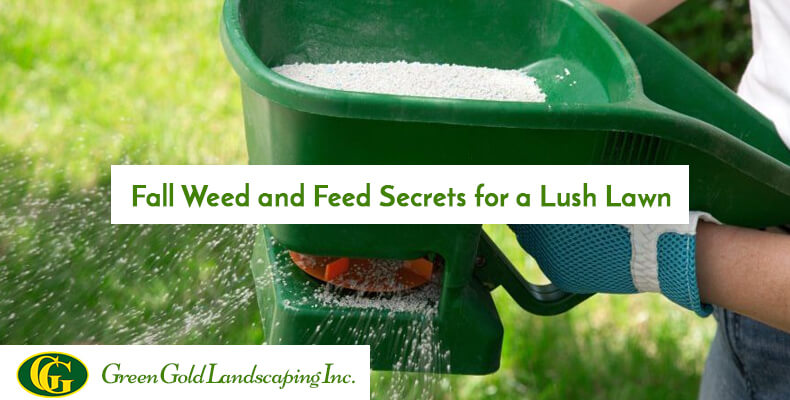12 Sep
Fall Weed and Feed Secrets for a Lush Lawn
Posted By Ervin in Gardening
The fall is the time for most of the plants to slow down and prepare themselves for the approaching winter season. But some of the weeds kick off themselves into top gear and start growing aggressively. So providing the right nutrients, helps the grass to fight weeds. Also, the treatment to combat the weeds depends on the climate and type of grass you grow in the lawn. This article will let you know the proper weed and feed methods for this fall.
Types of Weeds
Winter Annuals are the type of weeds that germinate in the late summer to the early fall. These weeds grow throughout the winter and into the early spring. Most common winter annual weeds are Henbit, Annual Bluegrass, Chickweed, corn Speedwell, and Lawn Burrweed. In the autumn you can target the fall germinating weeds. Fall is also the ideal time to control the perennial weeds. Because in this season most of the weeds start their winter food storage process, so it is easy to kill them using herbicides.
Treatment and Timing
The type of fall lawn weed killer should be selected based on the weed growth in the lawn. If there are already growing weeds and ready to be sprouted weeds, then you should use the combination of pre and post-emergent herbicide. The post-emergent will kill the growing, and the pre-emergent will take care of the yet to be sprouted weeds.
The application timing is dependent on the place you live, and the herbicides work at the best when the temperature is 50°F and more. Most of the weed killers are used in October. To find the perfect time you can contact your local lawn professional.
Feeding the Cool Seasoned Grass
Cool seasoned grasses have their most active growing season in the fall temperatures, and this is the ideal time for fertilizing and strengthening of the grass. Fresh out of summer dormancy, these grasses benefit from added fall nutrition, which spurs new shoot, stem and root growth, and helps increase their food reserves. The weeds are already active in the lawn and using the fall lawn weed killer; you can kill a broad spectrum of weeds in your garden. Use separate weed fighters to have the optimal result. Do not exceed the yearly limits of the weed killer applications and follow the directions given on the product labels.
Feeding the Warm Seasoned Grass
The growth of warm seasoned grass slows down as the fall approaches. The fertilization for these grass types should be done 6-8 weeks before the fall season. Warm season grass goes dormant in the winter, and the leaves turn brown, so most of the lawns need overseeding at this time. After completing the overseeding do not use the germicides as the growth of the grass is also affected. Complete the use of disinfectants well before the process of overseeding.
Fall Weed Control
Likewise the grass varieties, weeds are also warm or cool seasoned. Annual weeds like crabgrass and perennials grow throughout the year and also leave plenty of seeds for the years to come. If these weeds are not treated at the right time, they become strong and also become vulnerable to treatment. Early fall is the perfect time to treat the tough weeds. The weed killers help to eradicate the weeds, and if by chance the weeds go dormant then it is tough to remove them.
Conclusion
Feeding and weed control are two significant aspects of your fall lawn care that decide the health of your lawn for the coming seasons. Proper application of weedicides is the key to reduce their growth and achieve a lush green turf. But, the perfect time and temperatures for weed removal will vary from location to location and grass to grass. So, it is a wise decision to take the help of a local lawn care expert to do this sensitive job.
If you are residing in and around Westchester County or Greenwich CT, Contact Green Gold Landscaping Inc, a professional lawn maintenance contractor who offers lawn, landscape and snow removal services at affordable prices. Call at 914-882-5459 to get a free lawn checkup now.









